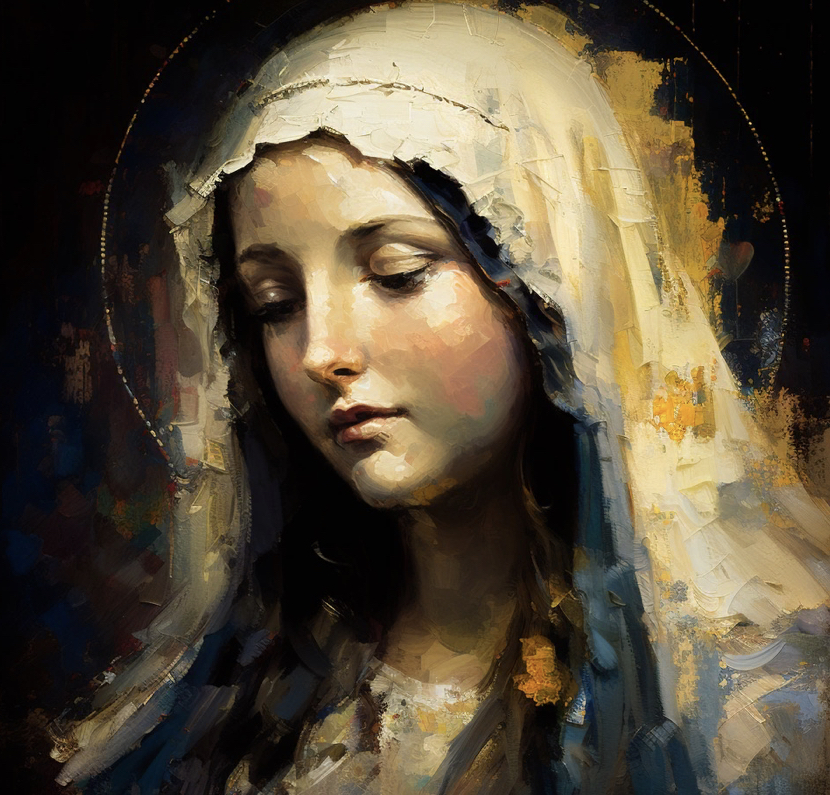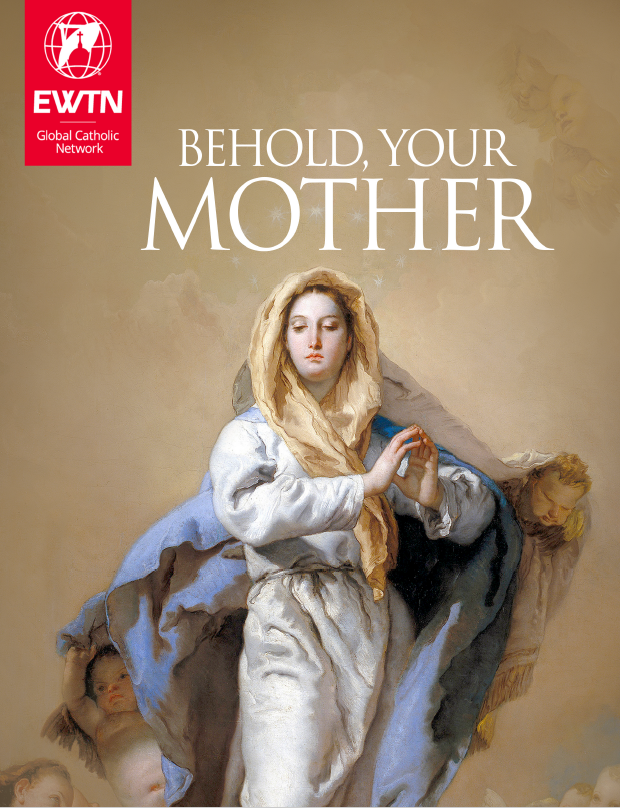They were continually in prayer with Mary, the mother of Jesus
On February 11, 2018, the Congregation for Divine Worship and the Discipline of the Sacraments inscribed a new obligatory Memorial of the Blessed Virgin Mary, Mother of the Church, into the General Roman Calendar. This memorial is celebrated every year on the Monday after Pentecost.
Mother of the Church
The theological roots of this title go back to the early Church.
The Fathers of the Church, holy and studious bishops of the first centuries, often spoke of Mary as the New Eve.
Just as the Woman Eve was “the mother of all the living” (Gen. 3:20), the Woman Mary was mother of all those living in Christ.
In Revelation 12:17, St. John says that this Woman’s offspring are “those who keep the commandments of God and bear testimony to Jesus.”
Behold Your Mother
Grow in love of the Blessed Mother
Click below for more information that may help remind you of a different aspect of our Mother, opening your heart and drawing you closer to her maternal arms and also to her Son, Jesus Christ.
This resource will bring your heart closer under her mantle, as we share a few of the beautiful and befitting names bestowed upon the Blessed Virgin Mary.
“[Mary] is mother wherever [Jesus] is Savior and head of the Mystical Body.” – The Catechism of the Catholic Church (paragraph 973)
The title “Mother of the Church” is not found in Sacred Scripture, but Pope St. John Paul II covered several ways that the Bible alludes to this title:
Although the title “Mother of the Church” was only recently attributed to Mary, it expresses the Blessed Virgin’s maternal relationship with the Church as shown already in several New Testament texts.
Since the Annunciation, Mary was called, to give her consent to the coming of the messianic kingdom, which would take place with the formation of the Church.
When at Cana Mary asked the Son to exercise his messianic power, she made a fundamental contribution to implanting the faith in the first community of disciples, and she co-operated in initiating God’s kingdom, which has its “seed” and “beginning” in the Church (cf. Lumen gentium, n. 5).
On Calvary, Mary united herself to the sacrifice of her Son and made her own maternal contribution to the work of salvation, which took the form of labour pains, the birth of the new humanity.
In addressing the words “Woman, behold your son” to Mary, the Crucified One proclaims her motherhood not only in relation to the Apostle John but also to every disciple. The Evangelist himself, by saying that Jesus had to die “to gather into one the children of God who are scattered abroad” (Jn 11:52), indicates the Church’s birth as the fruit of the redemptive sacrifice with which Mary is maternally associated.
The Evangelist St Luke mentions the presence of Jesus’ Mother in the first community of Jerusalem (Acts 1:14). In this way he stresses Mary’s maternal role in the newborn Church, comparing it to her role in the Redeemer’s birth. The maternal dimension thus becomes a fundamental element of Mary’s relationship with the new People of the redeemed. (General Audience, September 17, 1997)
The Father chose Mary from among all women to be the mother, according to human nature, of His Divine Son. As she is Mother of Christ in the natural order, she is also the Mother of His Mystical Body, the Church, of which He is the Head in the order of grace.
In the Book of Hebrews 2:9-13, the author makes it clear that Jesus is our brother:
[W]e see Jesus, who for a little while was made lower than the angels, crowned with glory and honor because of the suffering of death, so that by the grace of God he might taste death for every one.
For it was fitting that he, for whom and by whom all things exist, in bringing many sons to glory, should make the pioneer of their salvation perfect through suffering. For he who sanctifies and those who are sanctified have all one origin. That is why he is not ashamed to call them brethren, saying,
“I will proclaim thy name to my brethren, in the midst of the congregation I will praise thee.”
And again, “I will put my trust in him.”
And again, “Here am I, and the children God has given me.” (emphasis added)
Since Jesus is our brother, and Mary is His mother, it follows that Mary is our mother as well.
Finally, when Jesus was on the cross, we see the tender moment when He gave Mary to the Apostle John. In the Gospel of John 19:26-27, we read:
When Jesus saw his mother, and the disciple whom he loved standing near, he said to his mother, “Woman, behold, your son!” Then he said to the disciple, “Behold, your mother!” And from that hour the disciple took her to his own home.
Thus, the Tradition of the Church, coming from the Apostles, teaches us to understand that the Lord was entrusting all of His disciples to Mary, in the person of St. John.

